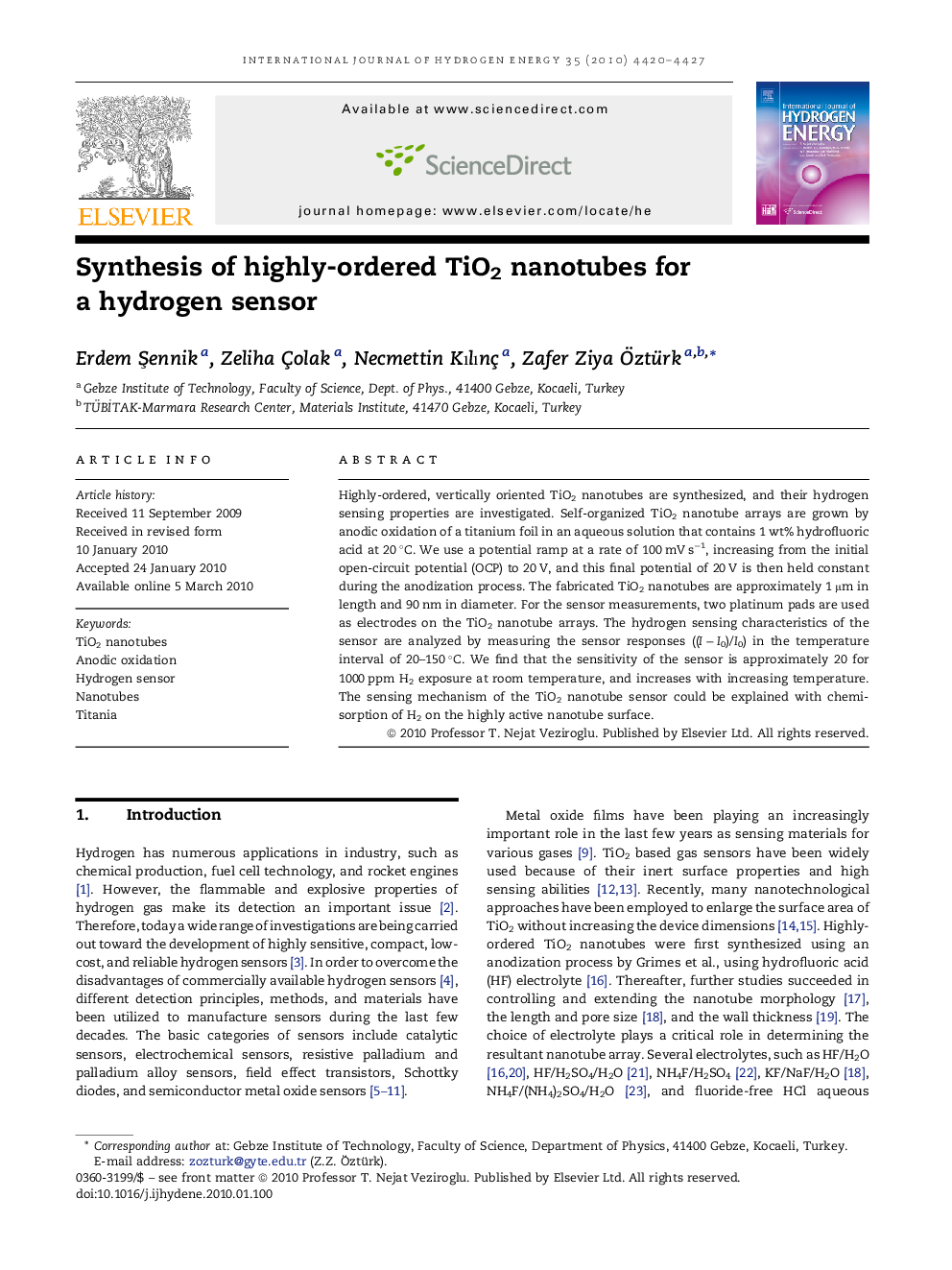| Article ID | Journal | Published Year | Pages | File Type |
|---|---|---|---|---|
| 1273144 | International Journal of Hydrogen Energy | 2010 | 8 Pages |
Highly-ordered, vertically oriented TiO2 nanotubes are synthesized, and their hydrogen sensing properties are investigated. Self-organized TiO2 nanotube arrays are grown by anodic oxidation of a titanium foil in an aqueous solution that contains 1 wt% hydrofluoric acid at 20 °C. We use a potential ramp at a rate of 100 mV s−1, increasing from the initial open-circuit potential (OCP) to 20 V, and this final potential of 20 V is then held constant during the anodization process. The fabricated TiO2 nanotubes are approximately 1 μm in length and 90 nm in diameter. For the sensor measurements, two platinum pads are used as electrodes on the TiO2 nanotube arrays. The hydrogen sensing characteristics of the sensor are analyzed by measuring the sensor responses ((I − I0)/I0) in the temperature interval of 20–150 °C. We find that the sensitivity of the sensor is approximately 20 for 1000 ppm H2 exposure at room temperature, and increases with increasing temperature. The sensing mechanism of the TiO2 nanotube sensor could be explained with chemisorption of H2 on the highly active nanotube surface.
